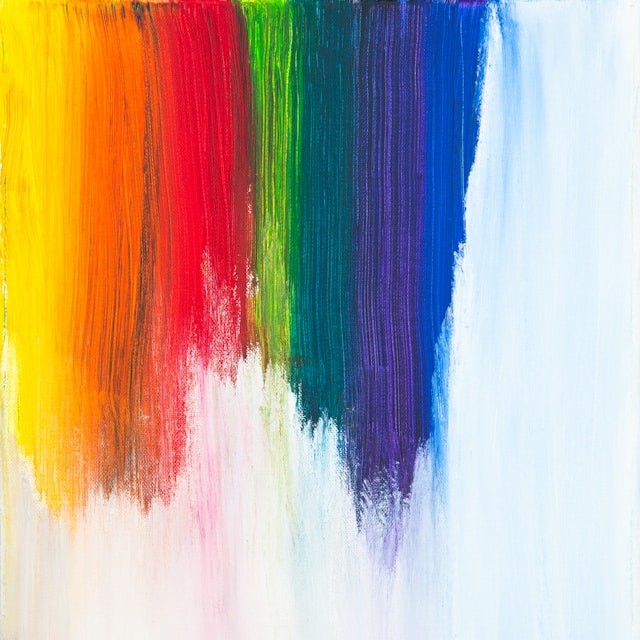The artful use of color is a cornerstone of interior design, serving as a dynamic tool that can profoundly influence the look and feel of a living space. From setting the mood to defining spatial perceptions, the role of colors in the interior of houses is both nuanced and powerful.
Let's delve into the details of how colors contribute to the overall design aesthetic and functionality of a home.
1. Mood Enhancement:
Colors have a remarkable ability to shape emotions and influence the overall mood of a room. Each color carries its own psychological associations:
-
Warm Colors: Shades of red, yellow, and orange are considered warm colors. They evoke a sense of energy, warmth, and vibrancy. These colors are ideal for spaces where socialization and activity are encouraged, such as living rooms or dining areas.
-
Cool Colors: Blues, greens, and purples are cool colors associated with calmness, serenity, and relaxation. Bedrooms, bathrooms, and spaces meant for unwinding often benefit from cool color schemes.
-
Neutral Colors: Whites, grays, and beige are neutral tones that offer versatility and timelessness. Neutrals can create a sense of balance, sophistication, and a backdrop for other more vibrant colors.
2. Space Perception:
Colors play a pivotal role in shaping our perception of space. The strategic use of color can visually enhance or diminish the size of a room:
-
Light Colors: Lighter hues, especially whites and pastels, reflect more light, creating an illusion of openness and airiness. They are an excellent choice for smaller rooms or spaces with limited natural light.
-
Dark Colors: Deeper tones absorb light and can create a sense of coziness and intimacy. Darker colors work well in larger rooms or areas where a more intimate atmosphere is desired.
-
Accent Colors: Introducing accent colors through feature walls or furniture can draw attention to specific areas, adding visual interest and creating focal points.
3. Architectural Emphasis:

Colors can be used strategically to emphasize architectural features and design elements:
-
Accentuating Details: Applying a contrasting color to architectural details such as moldings, trim, or built-in features can highlight their presence and contribute to a more dynamic visual appeal.
-
Focal Points: Creating an accent wall with a bold color can draw the eye and serve as a focal point in a room. This is particularly effective when showcasing artwork, a fireplace, or other prominent features.
-
Unity in Design: Consistent color choices throughout the house can create a sense of unity, especially in open floor plans where spaces flow seamlessly into one another.
4. Personal Expression:
Colors provide a canvas for personal expression and can reflect the personality and preferences of the occupants:
-
Individual Taste: Whether vibrant and eclectic or muted and sophisticated, the color palette chosen for a home is a direct expression of the occupants' taste and style.
-
Cultural Influences: Cultural backgrounds and personal experiences often influence color choices. Incorporating culturally significant colors can add depth and meaning to the design.
5. Functional Differentiation:
The choice of colors can serve practical purposes, helping to differentiate between functional areas within a home:
-
Distinct Zones: Assigning different colors to distinct areas such as the kitchen, living room, and bedrooms can create a visual hierarchy, making it easy to distinguish between functional zones.
-
Open Spaces: In open-concept living spaces, using a cohesive color palette with subtle variations can maintain a sense of unity while still differentiating specific areas.
6. Lighting Interaction:
Colors interact with natural and artificial lighting in a way that can significantly impact their appearance:
-
Natural Light: Colors may appear different under natural daylight compared to artificial lighting. Testing paint samples under different lighting conditions is crucial to achieving the desired effect.
-
Artificial Lighting: The warmth or coolness of artificial lighting can influence the perceived tone of colors. Consider the color temperature of light bulbs to ensure they complement the chosen color palette.

7. Cohesive Design Themes:
Colors contribute to creating cohesive design themes that tie together various elements within a home:
-
Harmonious Palettes: Consistency in color choices fosters a sense of harmony. Selecting a consistent color palette can connect different rooms and elements, creating a seamless and unified design.
-
Theme Reinforcement: Whether it's a coastal theme with soothing blues and whites or an earthy, nature-inspired theme with greens and browns, colors play a key role in reinforcing design themes.
8. Trends and Timelessness:
Colors can reflect both contemporary trends and timeless design principles:
-
Trend Incorporation: Designers may incorporate trendy colors to give a space a modern and up-to-date feel. However, incorporating timeless neutrals alongside trendy colors ensures longevity.
-
Classic Neutrals: Timeless colors such as classic whites, grays, and beiges provide a neutral backdrop that withstands changing trends. These colors offer flexibility for future design updates.
In conclusion, the use of colors in the interior of houses is a nuanced art that involves a thoughtful consideration of psychology, aesthetics, and functionality. By understanding the impact of colors on mood, space perception, and overall design themes, homeowners and designers alike can create living spaces that are not only visually stunning but also tailored to meet the emotional and practical needs of those who inhabit them.
Whether aiming for a bold and vibrant ambiance or a serene and sophisticated retreat, the artful application of colors ensures that a home becomes a personalized and harmonious haven.


